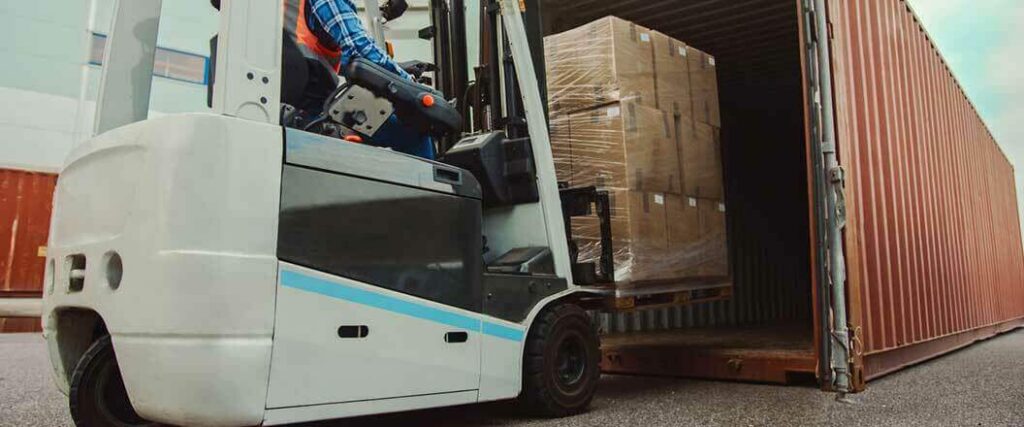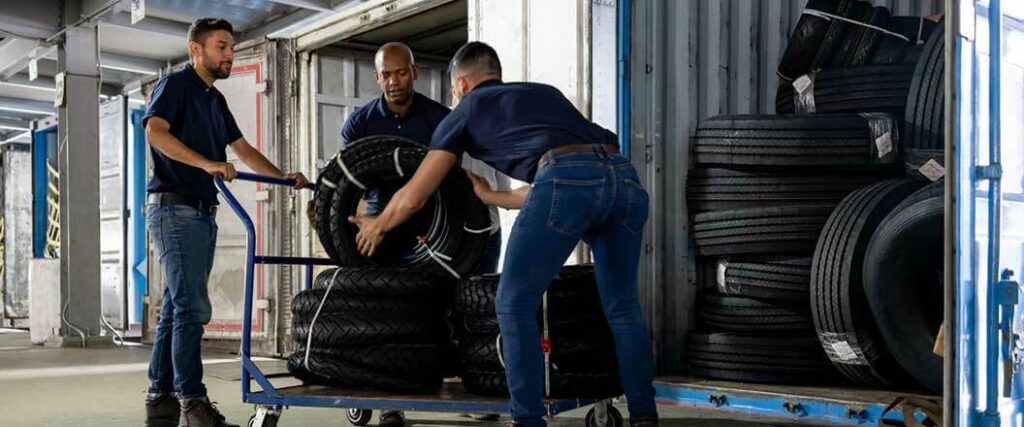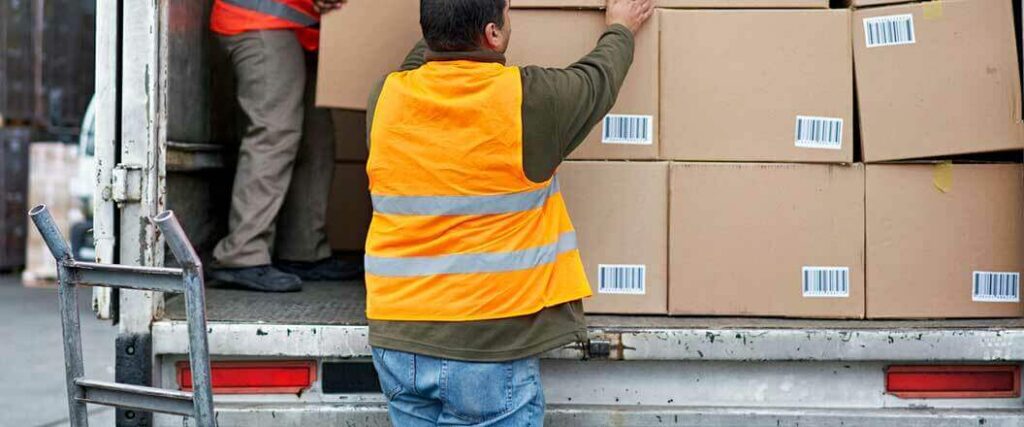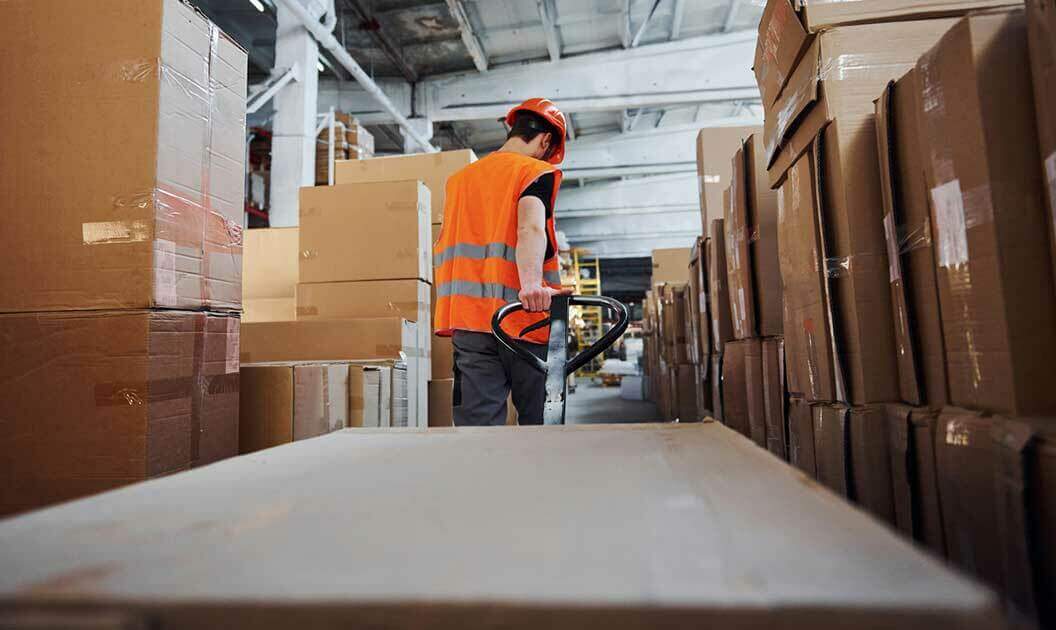The National Association of Small Trucking Companies (NASTC) describes floor loaded transload services as a way of transferring non-palletized freight between transport modes. This method streamlines handling and is cost-effective for various loads. This includes boxes and bulky goods that can’t be easily secured to a pallet.
Despite the benefits of floor loaded transload, challenges such as space constraints and potential damage during handling may arise. Depending on a shipper’s unique circumstances, using this service might not be the best option.
We’ll discuss the inner workings of floor loaded transload services, the benefits, and when you should use it.
What Is Floor Loaded Transload?
To understand floor loaded transload services, we have to break it down into two separate parts. First, it means that cargo is loaded directly onto the floor of a container or trailer. No kind of pallet is used.
The second part is the transloading process. This occurs when the floor loaded freight is transferred between modes of transport.
Essentially, this service combines each of these elements together, allowing shippers to move cargo without having to use a pallet.

What’s the Difference Between Floor-Loaded and Pallet Loaded?
Floor and pallet loaded freight are the two primary ways cargo is transported. Despite them being efficient ways to ship, each one is distinctly different from the other.
- Floor loaded freight: This entails shipping goods that have been loaded onto the floor of a container or trailer. Items, often boxes, are then stacked on top of one another.
- Pallet loaded freight: Cargo is stacked and secured on wooden platforms using straps, clear wrap, or both.
Shippers can switch between floor and palletized methods of transporting freight based on the needs of their cargo.
How Does Floor Loaded Transload Work?
Floor loaded shipments can be transloaded between methods of transport. That said, there are three distinct parts of this service.
- Unloading
- Transloading
- Loading
These three segments must be performed correctly to ensure floor loaded transload services work efficiently.
Unload
Trucks and containers carrying floor loaded shipments are positioned for unloading at a dock. Workers carefully remove items from the truck or container, taking care to maintain proper weight distribution and avoid damage.
Warehouse workers will need to unload the cargo starting from the top and work their way down the stack. Unloaders may implement a team lift if any of the freight is too heavy for one person to lower.
Be warned that the process of unloaded individual items and boxes is very labor-intensive and can take much longer compared to shifting palletized items. Rates for this services may therefore be much higher.
Transfer
After unloading from trucks or containers, floor loaded shipments are put into a safe area where they won’t sustain any damage. In many cases, items are sorted and organized based on destination and transportation requirements.
They’re typically transferred to different areas of the facility using conveyor belts. Smaller packages will travel to a higher level in the facility, while bulkier goods will travel on belts located on the floor.
It’s at this stage that any palletization would take place. For instance, let’s say there’s a large shipment of automotive parts being delivered to you from the manufacturer for further distribution into different auto parts stores.
Sending the delivery to a facility with floor loaded transload capabilities allows the boxes of parts to be unloaded and transferred to individual pallets. This greatly improves delivery speed at each separate location.
Load
The final part of the process is floor loading goods in the new container or trailer. This will begin when the unloaded goods arrive at the loading area in the facility. If a slightly different series of items are being loaded, floor spaced is maximized by having goods packed from the bottom to the top.
Heavier items are placed on the bottom of the trailer or container to prevent lighter and smaller boxes from becoming damaged. As with unloading, a team lift may be used to load cargo that’s exceptionally heavy.
Anything palletized would be loaded on using pallet jacks and forklifts, making the process both faster and less labor-intensive.

What Are the Benefits of Floor Loaded Transload?
Since freight is often palletized, most shippers don’t realize that transloading floor loaded cargo is a possibility. That’s why we’re going to discuss the benefits you’ll be able to enjoy when using this service.
Great for Bulky and Durable Items
Floor loaded transload can be used for cargo of all shapes and sizes. That said, it’s especially useful for bulky and durable cargo that can’t fit comfortably on a pallet.
This includes items like:
- Tires
- Metal coils
- Pipes
- Mini fridges
Many of these items have an awkward shape, which makes them difficult to secure and palletize. As a result, floor loading the items is more convenient.
Transloading this kind of cargo by using two or more warehouse workers is safer than using a forklift. These types of items can hang over a pallet, which could make it difficult to slide the forks underneath.
As a result, the cargo could potentially sustain damage. Using workers to transfer these items between modes of transport will ensure the safety of the shipment.
Reduced Shipping Costs
When it comes to freight shipping and transload services, businesses are always trying to save money. Fortunately, choosing floor loaded transloading can lead to exponential cost savings.
A few reasons for this include:
- Elimination of pallet costs: With floor loading, there's no need to invest in pallets, which can represent a significant cost for shippers.
- No need for a forklift: Floor loaded cargo is transloaded using warehouse workers, rather than a forklift.
- Flexible space utilization: Floor loading allows for more efficient use of available space within warehouses and transport vehicles.
Consider some data we’ve provided on average transload rates for palletized and floor loaded cargo.
Rates for Palletized and Floor Loaded Transloading Services
| Service | Rate |
| Palletized Transloading | $0.30 — $0.75 |
| Floor Transloading | $0.25 — $0.50 |
Provided by industry averages*
The transloading costs for each service might not seem that drastic, but every amount of money that can be saved makes a difference. When the expenses add up, it’s easy to see that floor transloading is the cheaper option.
While floor loading can be cheaper in many cases, you should still conduct a thorough cost analysis of time and labor costs before using this option. If it takes a longer amount of time to transfer your non-palletized freight between modes of transport, the labor costs may add up and counteract the potential cost savings.
Increased Flexibility When Stacking Cargo
Floor loaded transload services offer enhanced flexibility in loading and stacking cargo, providing shippers with greater versatility in managing their shipments.
Shippers have the flexibility to customize stacking arrangements based on the following factors:
- Size
- Shape
- Weight of individual items
This flexibility makes floor loaded transload suitable for all products. The service also removes the need to for breaking down palletized freight, since the cargo is loaded individually.

Why Would A Shipper Decide To Floor Load Instead of Palletize?
As a shipper, it might be difficult to determine when to use floor load transloading. Fortunately, there are a few tell-tale signs that you can use to decide if you need a transloading agreement.
Some things to look for include:
- Handling bulky or oversized items
- Budgeting concerns
- Efficiency problems
- A need for further re-distribution
Going through the trouble of palletizing large and bulky goods can be stressful. If you’re shipping cargo like this, then it’s probably a good indicator you should use floor loaded transload services.
Manufacturers that are on a budget and selling wholesale should also take advantage of this service. Palletized transloading services can get pricey, while transporting floor loaded freight is a more affordable alternative. Plus, it makes it easier to get the boxes palletized for final delivery, as mentioned earlier.
Floor loading allows for optimal space utilization within warehouses and transport vehicles. This give shippers the ability to maximize the amount of cargo in a container or trailer and stack the goods the way they want.
Optimize Your Logistics Operations with Transload Services USA
Transload Services USA provide shippers with a cost-effective and efficient solution for managing their cargo. Our knowledge and skill in the industry will ensure your floor loaded goods are transferred between modes of transport safely and seamlessly.
In addition to transloading, we offer these services:
- Freight consolidation: Combine multiple shipments into one to reduce costs and improve efficiency.
- Cross Docking: Streamline your supply chain by bypassing storage and directly transferring goods to outbound vehicles.
- Freight Rework: Trust our team to efficiently rework and repack your freight to meet your specific requirements.
Don't deprive yourself of the help that you need. Contact us today at (866) 757-1109 or fill out your risk-free quote to gain access to services tailored to your needs.


